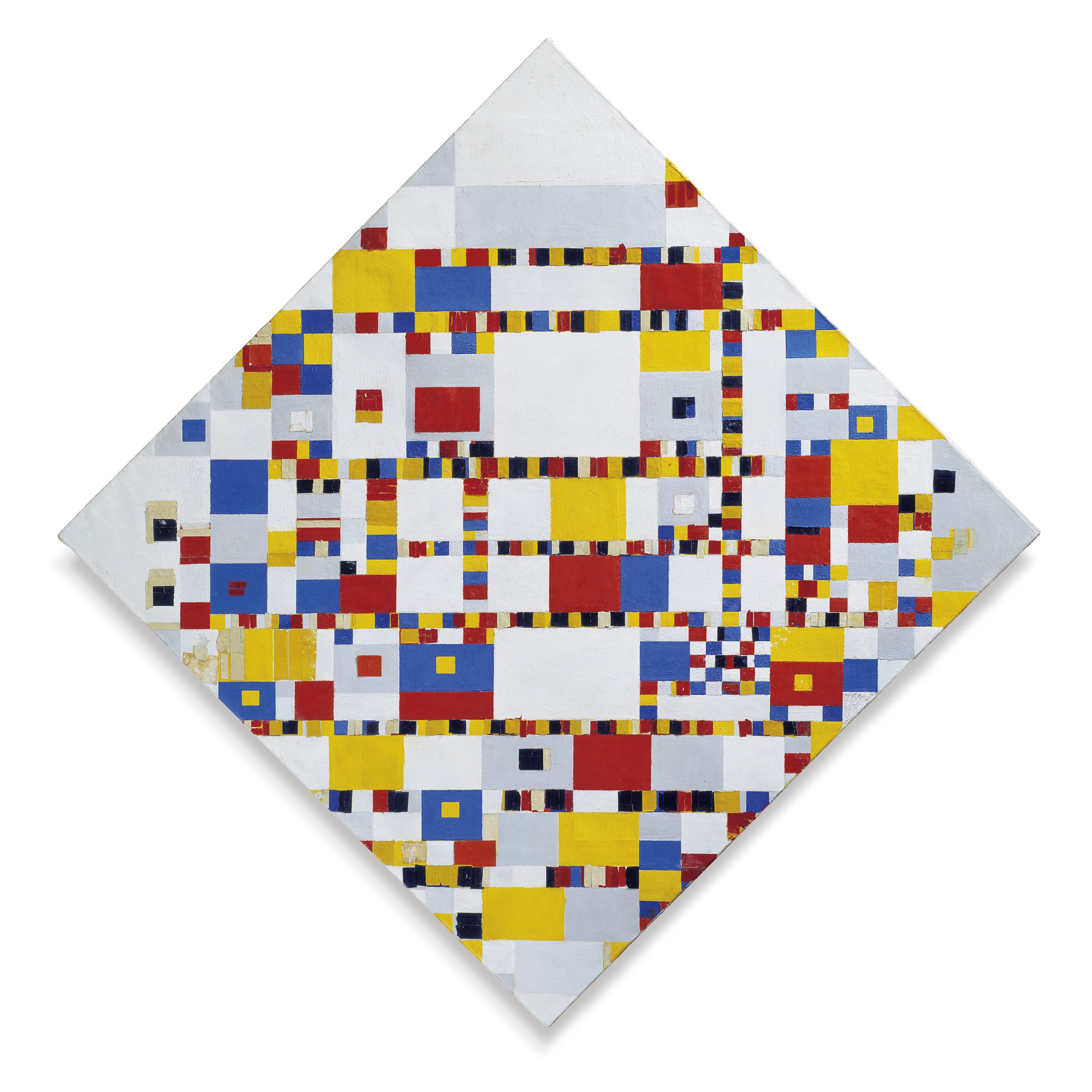Victory Boogie Woogie, 1944 by Piet Mondrian
Victory Boogie Woogie is the last, unfinished work of the Dutch abstract painter Piet Mondrian, left incomplete when Mondrian died in New York in 1944. He was still working on it three days before dying. Since 1998 it has been in the collection of the Kunstmuseum, in The Hague. It has been said that “Mondrian’s life and his affection for music are mirrored in the painting [and that it is] a testimony of the influence which New York had on Mondrian.”

Victory Boogie-Woogie, a painting that Mondrian conceived in expectation of victory in World War II and that remained unfinished by reason of his death on February 1, 1944, adds immeasurably to the innovations of his American period. Even in its half-finished state, the painting shows an enormous enrichment over the 1943 drawing containing a first design for the work. It is remarkable to see how Mondrian, already over seventy, was capable of a liveliness, a receptivity to new impressions, a suppleness in dealing with his own approach – all sharply in contradiction to the reputation for dogmatism that surrounded him and that he had himself furthered in the years after 1925, in his dialectic controversy with Theo van Doesburg. Modrian was not doctrinaire in any sense of the term, but he did go constantly further on his own way, and the changes that took place in his work were not deviations from a dogmatic policy but consequences of the insights and experiences deriving from his eyes and his “thinking with his eyes,” as Paul Cezanne put it. Victory Boogie-Woogie is a fascinating and convincing example of this development.
It may be a mistake to judge Victory Boogie-Woogie as an actual painting, since it is, quite literally, work in progress. Yet the picture as it stands reveals a number of innovations that go considerably beyond Broadway Boogie-Woogie. First of all, the strictly linear pattern that is so marked a characteristic of New York City I and that is still dominant in Broadway Boogie-Woogie is of far less importance here. Instead of a flowing movement, a syncopated movement now predominates; the beat of the measure dissolves into shifts of accent.
